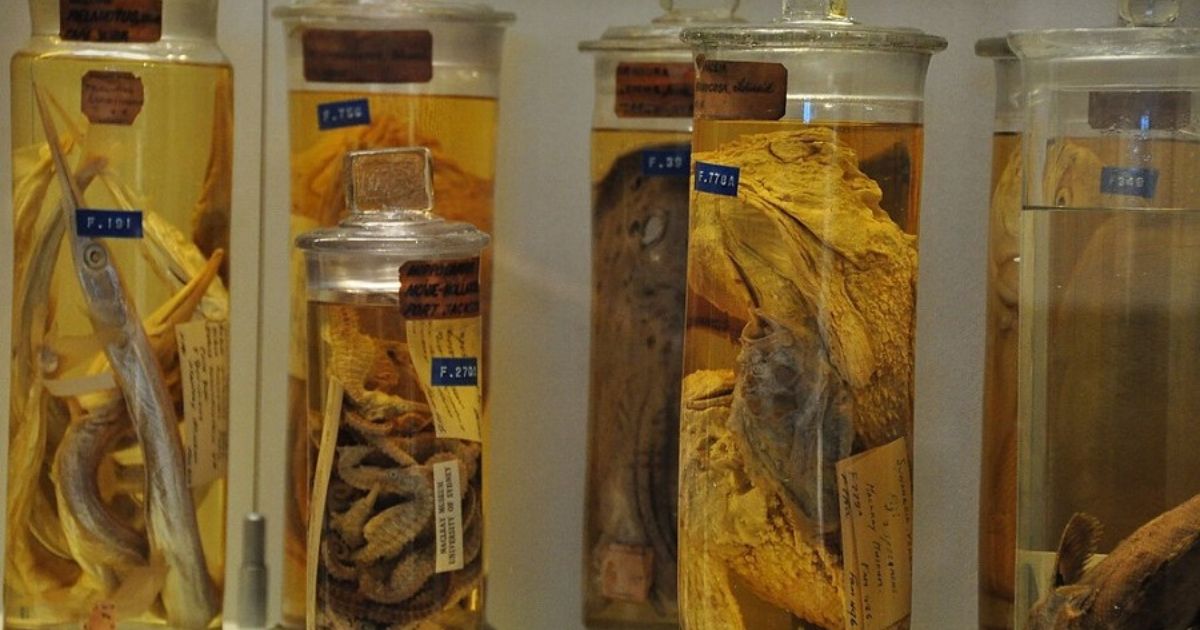The discoloured fish that rest in glass jars in museums across the world are normally used by specialists as references to study the traits that identify certain species. But a new study proposes an additional use for such 'samples.'
Published in the Journal of Applied Ichthyology, the paper suggests using such specimens to estimate the length-weight relationships of fish that are hard to find alive in their natural environment.
"The length-weight relationship of fish, which allow computing the weight from their length, is something marine biologists need for a wide variety of studies. For example, they need them when they are estimating the biomass of certain species by performing visual census either by scuba diving or by using remote observation vehicles or underwater video stations," said Amanda Hay, lead author of the study and a researcher at the Australian Museum Research Institute.
But some fish like those that live in deep waters are so difficult to reach and observe that a museum specimen may be the only known representative of the species. "This is why it is so important to 'extract' as much information as possible from that individual," Hay said.
When live fish are hard to catch for the researchers who study them, the most common practice is to assume that their biological traits equate to those of similar species. Using preserved fish specimens, however, is a more precise way to learn more about elusive species.
The proof of concept prepared by Hay and her colleagues at Canada's Beaty Biodiversity Museum and China's Institute of Oceanology involved measuring 56 preserved adult specimens of 31 species and uploading their results to FishBase, the largest online database on fish.
"FishBase has information for over 30,000 fish species but, of those, only 5,500 have length-weight parameters," said Daniel Pauly, co-author of the study and principal investigator of the Sea Around Us initiative at the University of British Columbia. "This can be improved if researchers in museums and other institutions around the world measure and weigh specimens in their collections and upload the data. This is what we are aiming for."
Journal Reference: Amanda Hay, Weiwei Xian, Nicolas Bailly, Cui Liang, Daniel Pauly. The why and how of determining length‐weight relationships of fish from preserved museum specimens. Journal of Applied Ichthyology, 2020; DOI: 10.1111/jai.14014
Story by University of British Columbia



